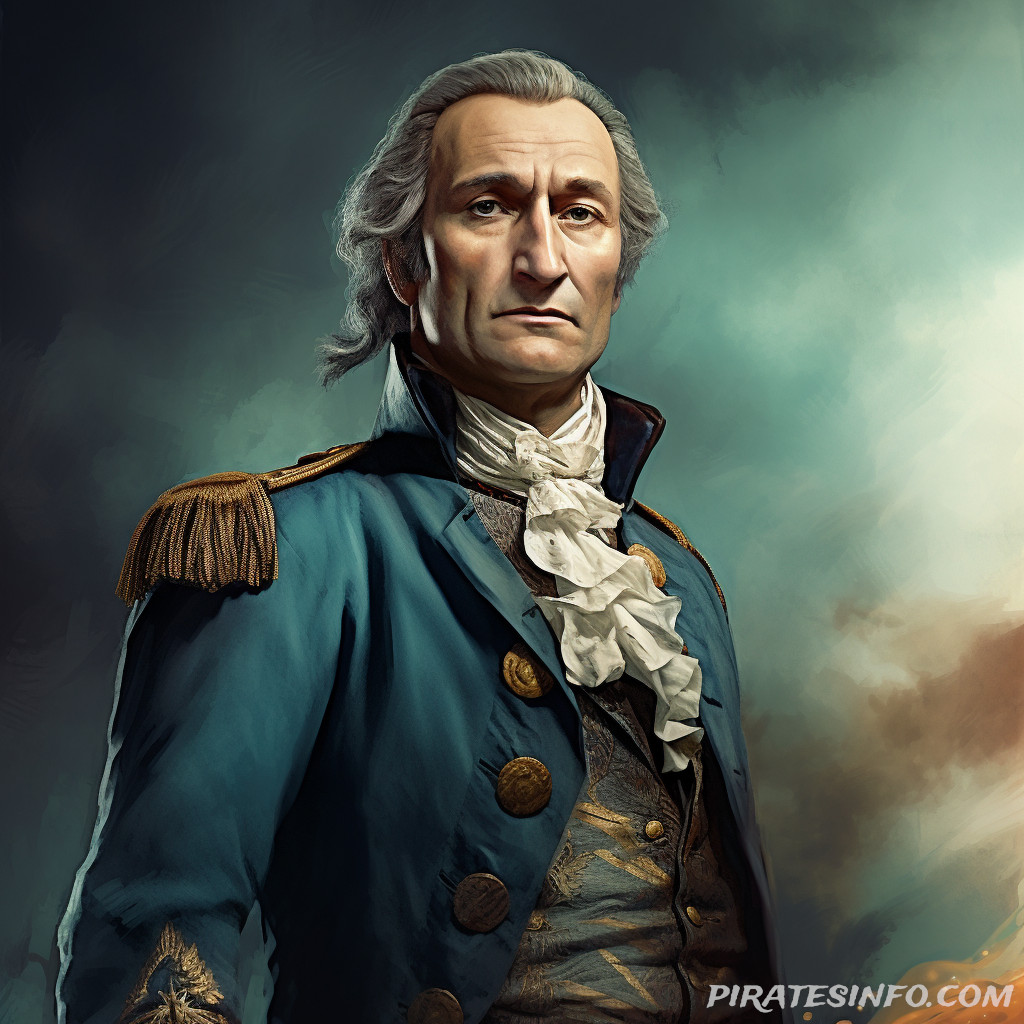
Bartholomew Roberts
Black Bart aka the Great Pirate Robers
Fast Facts
- Unlike the stereotypical drunken pirate, Roberts was known to be a teetotaler, prohibiting excessive drinking on his ship.
- Bartholomew Roberts is estimated to have captured over 400 ships during his piracy career, making him the most successful pirate of the Golden Age in terms of vessels captured.
- Roberts was known to be brave, innovative, and very strict. He was also known for his sense of justice and fairness.
- He came up with a pirate code for his crew that detailed rules about gambling, fighting, and distribution of booty.
- Interestingly, Roberts didn't initially choose the pirate life. He was forced into it after the ship he was third mate on was captured by pirates. He eventually became one of the most feared pirates in history.
- He was killed in a battle with HMS Swallow off the coast of Africa.
In the annals of piracy, there are names that resonate with terror and mystique, and then there's Bartholomew Roberts. Often referred to as the "Great Pirate Roberts" or the enigmatic "Black Bart", Roberts was less a marauder and more an artist of the high seas. His tales weren't just adventures; they were operas, played out on the vast stage of the Atlantic.
Black Bart's journey was one of audacious strategy and theatrical flair. Born in Wales, the seas beckoned him not as a call to pillage, but as a canvas for his larger-than-life personality. And it's said the oceans themselves would roar in approval or perhaps, in fear.
With more than 400 ships under his belt, Roberts swiftly rose from being a third mate on a slave ship to a legend that even the bravest would hesitate to cross paths with. Each conquest wasn't just about the loot but the statement it made. He was a maestro, and every ship he overtook was a testament to his unparalleled maritime acumen.
Yet, amidst the tales of his bravado, it's the nuances that stand out. Black Bart was known to be a teetotaler in an era and profession where rum was often the only solace. Moreover, his sense of style was unmatched. Imagine a man, poised on the deck, the wind rustling his crimson garments, a diamond cross glinting at his neck. The very picture was enough to either inspire ballads or sound alarm bells.
However, the most iconic symbol associated with the Great Pirate Roberts has to be his flag. A macabre masterpiece that spoke louder than cannons. The imagery of Roberts, armed with a flaming sword and dagger, standing over two skulls bearing the initials A.M.H. and A.B.H., symbolized both his might and his vendettas against Martinique and Barbados, respectively.
But like all grand tales, Black Bart's also had its final chapter. Off the coast of Africa, in a fierce battle, the seas claimed their own, marking the end of an era.
Today, the name Bartholomew Roberts, or "Black Bart" as he's fondly remembered, isn't just a footnote in pirate lore but a monumental testament to a man who, in his own unique way, redefined piracy.
Done with this parchment? Hoist the mainsail and chart a course to our pirates website, where tales as vast as the open seas await ye!
Full Name: Bartholomew Roberts, often known as "Black Bart" or "The Great Pirate Roberts"
Birth date: May 17, 1682
Death date: February 10, 1722
Place of birth: Casnewydd-Bach, near Fishguard, Pembrokeshire, Wales.
Type of pirate: Pirate.
Areas of operation: From the coasts of Brazil to Newfoundland and the Caribbean, making him one of the most successful pirates during the Golden Age of Piracy.
Physical Description: While there are no precise records of Roberts' physical appearance, descriptions portray him as a tall man with dark hair. He was known to dress flamboyantly, often wearing a crimson waistcoat, a hat with a red feather, and a diamond cross around his neck. There aren't well-documented details on scars or tattoos.
Flag/Emblem: Bartholomew Roberts had several flags. One of the most notable depicted a figure of him standing on two skulls, representing the heads of a Barbadian and a Martinican (referring to his foes, the residents of Barbados and Martinique). Another flag showed him with a sword in one hand and a flaming torch in the other, with two pirates beside him and a skeleton holding an hourglass beneath.